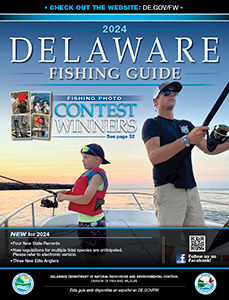Non-Tidal Season, Size & Creel Limits
Non-Tidal Waters |
||||
Species |
Open Season |
Minimum Size |
Daily Limit |
|

|
Largemouth bass |
All year |
12 inches; except 15 inches in Becks Pond |
6; except 2 from Becks Pond |

|
Smallmouth bass |
All year |
None between & including |
6 (no more than 1 > 17 inches) |

|
Striped bass hybrid |
All year |
15 inches |
2 |

|
Panfish (white perch, yellow perch, crappie, bluegill & pumpkinseed) |
All year |
No Size Limit |
50 (no more than 25 of one species) |

|
Trout (special rules apply, Freshwater Trout Fishing) |
Streams open 1st Sat. in April Ponds open 1st Sat. in March |
No Size Limit |
6 (4 in fly-fishing only waters) |

